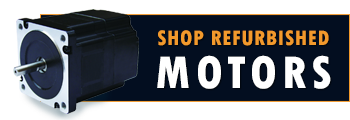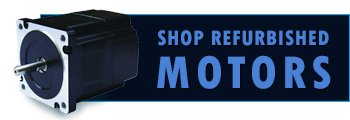Voltage & Frequency Variation Operation Requirements
Variation from Rated Voltage:
In accordance with NEMA MG 1, 12.44, motors shall operate successfully under running conditions at rated load with variation in the voltage up to the following percentages of rated voltage:
- Universal motors except fan motors - plus or minus 6 percent (with rated frequency).
- Induction motors - plus or minus 10 percent (with rated frequency).
Performance within these voltage variations will not necessarily be in accordance with the standards established for operation at rated voltage.
Variation from Rated Frequency:
Alternating - current motors shall operate successfully under running conditions at rated load and at rated voltage with a variation in the frequency up to 5 percent above or below the rated frequency. Performance within this frequency variation will not necessarily be in accordance with the standards established for operation at rated frequency.
Combined Variation of Voltage and Frequency:
Alternating - current motors shall operate successfully under running conditions at rated load with a combined variation in the voltage and frequency up to 10 percent above or below the rated voltage and the rated frequency, provided that the frequency variation does not exceed 5 percent. Performance within this combined variation will not necessarily be in accordance with the standards established for operation at rated voltage and rated frequency.
Effects of Variation of Voltage and Frequency Upon the Performance of Induction Motors:
- Induction motors are at times operated on circuits of voltage or frequency other than those for which the motors are rated. Under such conditions, the performance of the motor will vary from the rating. The following is a brief statement of some operating results caused by small variations of voltage and frequency and is indicative of the general changes produced by such variations in operating conditions.
- With a 10 percent increase or decrease in voltage from that given on the nameplate, the heating at rated horsepower load may increase. Such operation for extended periods of time may accelerate the deterioration of the insulation system.
- In a motor of normal characteristics at full rated horsepower load, a 10 percent increase of voltage above that given on the nameplate would usually result in a decided lowering in power factor. A 10 percent decrease of voltage below that given on the nameplate would usually give an increase in power factor.
- The locked-rotor and breakdown torque will be proportional to the square of the voltage applied.
- An increase of 10 percent in voltage will result in a decrease of slip of about 17 percent, while a reduction of 10 percent will increase the slip about 21 percent. Thus, if the slip at rated voltage were 5 percent, it would be increased to 6.05 percent if the voltage were reduced 10 percent.
- A frequency higher than the rated frequency usually improves the power factor but decreases locked-rotor torque and increases the speed and friction and windage loss. At a frequency lower than the rated frequency, the speed is decreased, locked-rotor torque is increased, and power factor is decreased. For certain kinds of motor load, such as in textile mills, close frequency regulation is essential.
- If variation in both voltage and frequency occur simultaneously, the effect will be superimposed. Thus, if the voltage is high and the frequency low, the locked-rotor torque will be greatly increased, but the power factor will be decreased and the temperature rise increased with normal load.
- The foregoing facts apply particularly to general-purpose motors. They may not always be true in connection with special-purpose motors, built for a particular purpose, or as applied to very small motors.
Operation of General-Purpose Alternating-Current Polyphase 2, 4, and 8 Pole, 60 Hertz Integral-Horsepower Induction Motors Operated on 50 Hertz:
While general-purpose alternating-current polyphase 2, 4, 6 and 8 pole, 60 Hertz integral-horsepower induction motors are not designed to operate at their 60 Hertz ratings on 50 Hertz circuits, they are capable of being operated satisfactorily on 50 Hertz circuits if their voltage and horsepower ratings are appropriately reduced. When such 60 Hertz motors are operated on 50 Hertz circuits, the applied voltage at 50 Hertz should be reduced to 5/6 of the 60 Hertz horsepower rating of the motor.
When a 60 Hertz motor is operated on 50 Hertz at 5/6 of the 60 Hertz voltage and horsepower ratings, the other performance characteristics for 50 Hertz operation are as follows:
- Speed
The synchronous speed will be 5/6 of the 60 Hertz synchronous speed and the slip will be 6/5 of the 60-Hertz slip. - Torque
The rated load torque in pound-feet will be approximately the same as the 60 Hertz rated load torque in pound-feet. The locked-rotor and breakdown torques in pound-feet of 50 Hertz motors will be approximately the same as the 60 Hertz locked-rotor and breakdown torques in pound-feet. - Locked-Rotor Current
The locked-rotor current (ampere) will be approximately 5 percent less than the 60 Hertz locked-rotor current (amperes). The code letter appearing on the motor nameplate to indicate locked-rotor KVA per horsepower applies only to the 60 Hertz rating of the motor. - Service Factor
The service factor will be 1.0. - Temperature Rise
The temperature rise should not exceed 90°C.
Effects of Voltages over 600 Volts on the Performance of Low-Voltage Motors:
Polyphase motors are regularly built for voltage ratings of 575 volts or less and are expected to operate satisfactorily with a voltage variation of plus or minus 10 percent. This means that motors of this insulation level may be successfully applied up to an operating voltage of 635 volts.
Based on motor manufacturers high-potential tests and performance in the field, it has been found that where service voltages exceed 635 volts, the safety factor of the insulation has been reduced to a level inconsistent with good engineering procedures.
In view of the foregoing, motors of this insulation level should not be applied to power systems either with or without grounded neutral where the voltage exceeds 630 volts, regardless of the motor connection employed.
Back To All References










